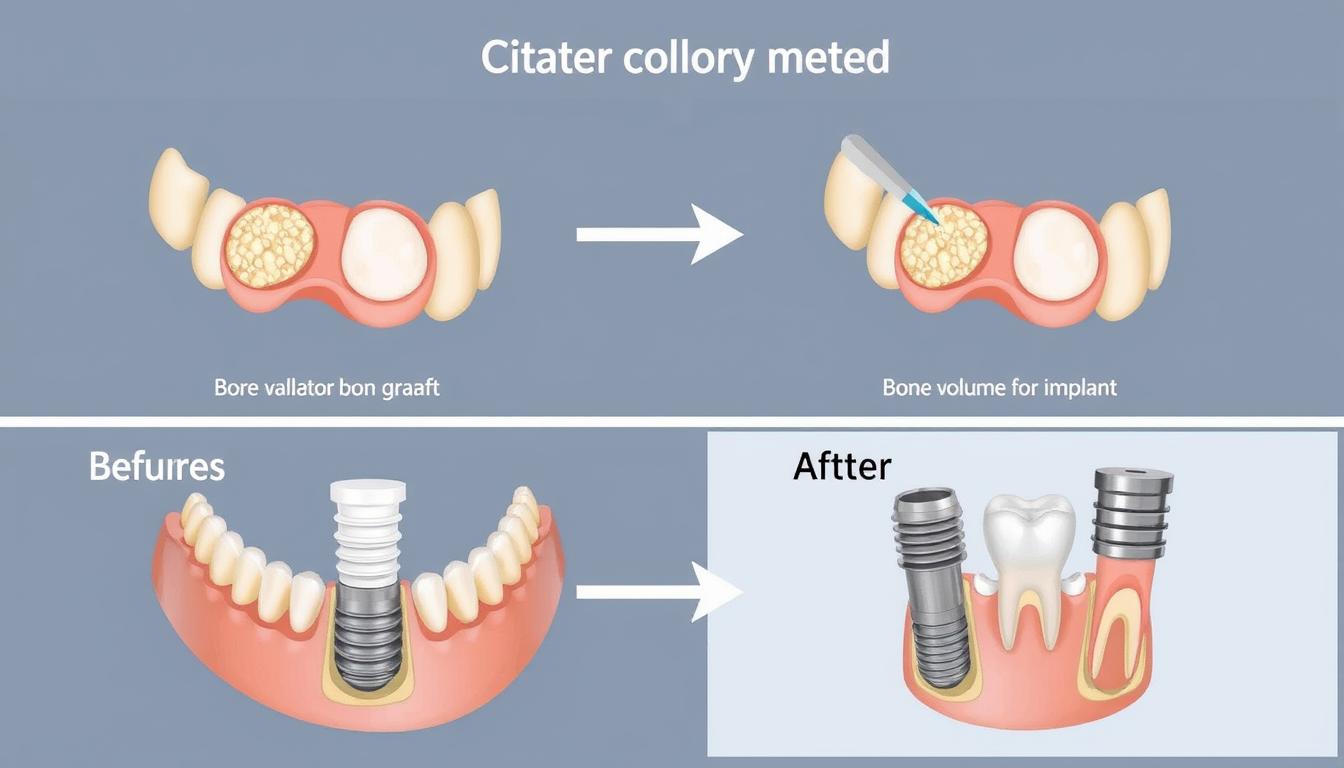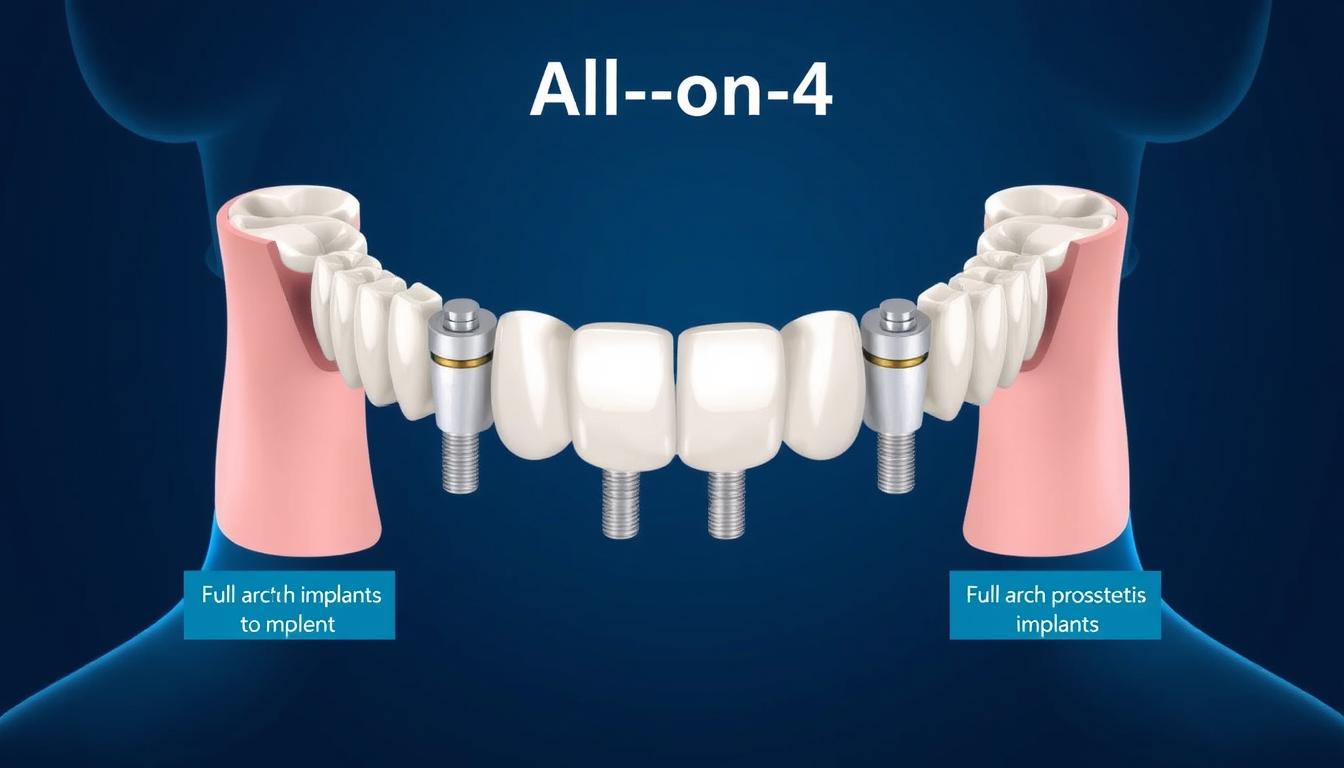Have you been told you don’t have enough bone for dental implants? Many patients feel discouraged after hearing they’re not candidates for this life-changing treatment. The good news is that modern dentistry offers several effective solutions for patients with bone loss. This comprehensive guide explores why bone loss occurs, available treatment options, and how to find the right specialist for your unique situation.
Not enough bone for dental implants can be a common challenge, but it doesn’t necessarily mean you can’t get the implants you need. Bone loss can occur due to a variety of reasons, including aging, periodontal disease, or trauma. However, dental professionals can often address this issue with procedures like bone grafting, sinus lifts, or ridge expansion, which help rebuild or enhance the bone structure. These techniques allow for successful implantation, even in patients with severe bone loss, making dental implants a feasible option for more individuals than ever before.

Why Insufficient Bone Density Occurs
Before exploring solutions, it’s important to understand why bone loss happens in the first place. Your jawbone needs regular stimulation to maintain its density and volume. When a tooth is lost, the bone that once supported it no longer receives this stimulation, leading to resorption (shrinking).

Several factors can contribute to insufficient bone for dental implants:
- Prolonged tooth loss – The longer a tooth is missing, the more bone deterioration occurs
- Periodontal (gum) disease – Infections can destroy both soft tissue and bone
- Trauma or injury – Physical damage to the jaw can result in bone loss
- Developmental defects – Some people naturally have less bone volume
- Denture wear – Long-term denture use can accelerate bone resorption
- Extraction complications – Difficult extractions may damage surrounding bone
The good news is that having insufficient bone doesn’t automatically disqualify you from getting dental implants. Modern dentistry offers several effective solutions to address this challenge. BONE GRAFTING
How Specialists Assess Your Bone Volume
Before recommending treatment options, dental specialists need to accurately evaluate your current bone volume and density. Think of this as creating a detailed map of your jaw to determine the best route forward.

Advanced Imaging Technologies
- Cone Beam CT (CBCT) Scans – Provides detailed 3D images of your jaw structure, bone density, and anatomical features
- Digital X-rays – Offers 2D views of bone height and identifies potential issues
- 3D Digital Modeling – Creates virtual representations for precise treatment planning
What Specialists Look For
- Bone height and width – Minimum requirements vary by implant type
- Bone density – Determines how well the bone can support an implant
- Proximity to anatomical structures – Such as nerves and sinuses
- Overall oral health – Including gum condition and remaining teeth
These diagnostic methods help specialists determine whether you need bone augmentation or if alternative implant options might be more suitable for your situation.
Not Sure About Your Bone Quality?
A qualified implant specialist can evaluate your specific case and explain all available options.Find a Qualified Implant Specialist
Bone Grafting Solutions: Building a Foundation
Bone grafting is like building a foundation for a house. Before constructing the house (placing the implant), you need a solid foundation (adequate bone) to support it. Grafting procedures add bone material to your jaw, creating sufficient volume and density to support dental implants.

Types of Bone Grafting Materials
Autografts
Bone harvested from your own body, typically from the chin, jaw, hip, or shin. This is considered the gold standard as it contains your own living cells.
Highest Success Rate
Allografts
Bone from human donors (cadavers) that has been carefully processed and sterilized. This eliminates the need for a second surgical site.
Widely Used
Xenografts
Bone material derived from other species, typically bovine (cow), that has been processed to be biocompatible with humans.
Good Availability
Synthetic Grafts
Laboratory-created materials designed to mimic natural bone. These include calcium phosphate, calcium sulfate, and bioactive glass.
No Donor Required
Common Bone Grafting Procedures

Sinus Lifts
When the upper jaw lacks height, a sinus lift raises the sinus floor and adds bone material between the jaw and sinuses. This is common for upper back teeth implants.
Recovery time: 4-9 months before implant placement
Success rate: 85-95%
Ridge Augmentation
Rebuilds the alveolar ridge (the bone that contains tooth sockets) when it’s too narrow or short for implant placement. This restores the natural contour of your jaw.
Recovery time: 4-6 months before implant placement
Success rate: 80-90%
Socket Preservation
Performed immediately after tooth extraction to prevent bone loss. Graft material is placed in the socket to maintain bone volume for future implant placement.
Recovery time: 3-6 months before implant placement
Success rate: 90-95%
Block Bone Grafting
Uses a solid piece of bone, typically from the jaw or hip, to rebuild larger defects. This technique is used for significant bone loss cases.
Recovery time: 5-9 months before implant placement
Success rate: 75-85%
“Bone grafting has revolutionized implant dentistry, making it possible for almost anyone to receive dental implants, regardless of their initial bone volume.”
— American Academy of Implant Dentistry
Curious About Bone Grafting Options?
Learn which bone grafting technique might be right for your specific situation.Learn More About Bone Grafting Options
Alternative Implant Solutions for Low Bone Density
When extensive bone grafting isn’t ideal, several innovative implant designs can work with your existing bone structure. These specialized implants are specifically designed for patients who might otherwise be told they don’t qualify for implants.

Zygomatic Implants
These extra-long implants anchor in your cheekbone (zygoma) rather than your jaw. They’re ideal for upper jaw restoration when there’s significant bone loss.
- Eliminates need for extensive bone grafting
- Can support full arch restorations
- Shorter treatment time (3-6 months)
- Success rate: 95-98%
Mini Dental Implants
Smaller in diameter than traditional implants (1.8-3mm vs. 3.5-6mm), mini implants can be placed in areas with less bone width.
- Less invasive procedure
- Often requires no bone grafting
- Can often be loaded immediately
- Success rate: 85-95%
All-on-4/All-on-6
These techniques use just 4-6 strategically placed implants to support a full arch of teeth, often utilizing available bone and avoiding grafting.
- Angled placement maximizes existing bone
- Often allows same-day teeth placement
- Full-arch restoration with fewer implants
- Success rate: 90-95%

Other Specialized Techniques
- Pterygoid Implants: Anchored in the pterygoid process bone at the back of the upper jaw
- Trans-Sinus Implants: Pass through the sinus and engage the nasal bone structure
- Short Implants: Wider but shorter implants designed for areas with limited bone height
Who Performs These Procedures?
These advanced techniques require specialized training and experience. Look for:
- Board-certified implant specialists
- Oral surgeons with implant training
- Periodontists with advanced implant credentials
- Dentists with extensive implant experience
Discover Your Implant Options
Find out if alternative implant techniques could work for your specific situation.See If You’re a Candidate
How to Choose a Qualified Implant Specialist
Finding the right specialist is crucial when dealing with complex cases involving insufficient bone. The success of your treatment depends largely on the expertise and experience of your provider.

Credentials to Look For
- Board Certification in Implantology – Such as Diplomate status with the American Board of Oral Implantology
- Fellowship in implant organizations – Like the American Academy of Implant Dentistry (AAID)
- Advanced training certificates – In specialized techniques like zygomatic implants
- Years of experience – Particularly with complex cases
Questions to Ask
- How many similar cases have you treated?
- What is your success rate with bone grafting/alternative implants?
- Can I see before and after photos of similar cases?
- What technology do you use for diagnosis and treatment planning?
- What are all my treatment options?
Cost Considerations and Insurance
| Procedure | Average Cost Range | Insurance Coverage | Financing Options |
| Standard Bone Grafting | $300-$3,000 | Partial (15-50%) | Payment plans, CareCredit |
| Sinus Lift | $1,500-$5,000 | Partial (15-50%) | Payment plans, CareCredit |
| Zygomatic Implants | $5,000-$10,000 per implant | Rarely covered | Payment plans, medical loans |
| All-on-4 | $15,000-$30,000 per arch | Partial (10-30%) | Payment plans, medical loans |
Insurance Tip: Many dental insurance plans have annual maximums of $1,000-$1,500. For extensive work, consider medical insurance, which may cover certain procedures when they’re deemed medically necessary.
Frequently Asked Questions

Can I get dental implants if I’ve been told I don’t have enough bone?
Yes, in most cases. Modern dentistry offers solutions like bone grafting and specialized implant designs (zygomatic implants, mini implants, All-on-4) that can work with minimal bone. Very few patients are truly not candidates for some form of implant treatment.
How long does bone grafting add to the implant process?
Typically, bone grafts need 3-9 months to heal before implant placement, depending on the type and extent of the graft. However, in some cases, minor grafting and implant placement can be done simultaneously, saving time.
Are bone grafting procedures painful?
Most patients report minimal discomfort during recovery. The procedure itself is performed under local anesthesia, sometimes with sedation options. Post-operative pain is typically manageable with over-the-counter or prescribed pain medications.
What happens if I do nothing about my missing teeth?
Without replacement, missing teeth lead to continued bone loss, shifting of adjacent teeth, changes in facial appearance, and potential digestive issues from compromised chewing ability. The longer you wait, the more bone loss occurs, potentially making future treatment more complex.
How do I know which solution is right for me?
A comprehensive evaluation by a qualified implant specialist is necessary to determine the best approach for your specific situation. This typically includes 3D imaging, examination of your overall oral health, and discussion of your goals and preferences.
Taking the Next Step Toward Your New Smile
Having insufficient bone for dental implants is a common challenge, but it’s rarely an insurmountable obstacle. With modern techniques like bone grafting, zygomatic implants, and strategic implant placement, most patients can still enjoy the benefits of dental implants.
The key is working with a qualified specialist who has experience with complex cases and can offer the full range of treatment options. By understanding your options and seeking expert care, you can overcome bone loss challenges and achieve a functional, beautiful smile that lasts a lifetime.

Ready to Explore Your Dental Implant Options?
Schedule a consultation with a qualified implant specialist to discuss your specific case and discover the solutions available to you.
